Ward Mortier is a Belgian circus artist, specialized in Chinese pole, acrobatics, parkour and music. Harvey Bewley is a British industrial designer who lives and works in Denmark and does research on objects. They worked two weeks together in Le Manège (Reims, FR) in September 2021. This is the logbook of Ward.
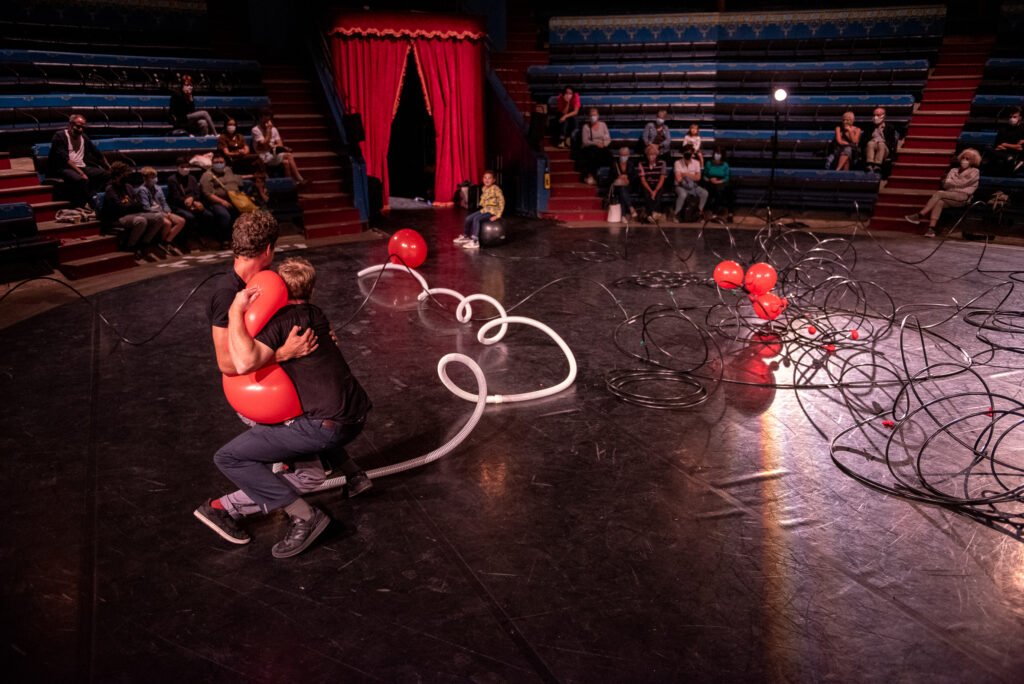
Expectations
Harvey defines himself as an industrial designer. Before we met each other, I expected that our research was going to be based on the relationship between ‘the circus performer’ and a specifically (future) designed object.
I’m very happy that we didn’t go that way. During one of our many talks, we concluded that object research in circus arts seems to be a very typical and even classic approach to create. This most often results in inventing new circus props and the demonstration of all possible ways a circus artist can relate to that ‘invention’. But eventually the object stays of a secondary importance. The protagonist is the performer that tames the object for its own glory.
During one of our preparation sessions by video conference, Harvey dropped the words “performing objects”. This caught my attention and made me wonder how he, as a designer, approaches performing arts. He went on and spoke about “social and soft robots”, the fact that a human can develop empathy for objects influenced by the way it interacts.
I started wondering how my artistic approach could influence the research Harvey has been doing for the last couple of years. My own artistic work is always directly linked to the place it is brought in or created for. Most often it is based on the surroundings, including the spectator that receives and interacts with the proposition of the artist / performer(s). Basically I depart from the ability of adaptation, since Harvey is ‘giving form’ with a specific use in mind.
Our main goal for the 2 weeks of residency was exchanging vision and practice by passing through many diverse ideas, references and (crash) tests. We departed from a very simple principle: 2 balloons, connected to each other with a tube.
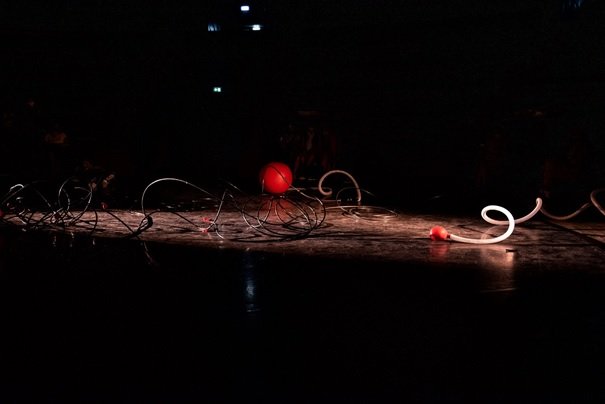
Object circus
We decided to experiment with the reach of this principle by diversifying and adding material. We went to a local garden shop to find longer and larger tubes. We wanted to link multiple elements so we took valves and T-connectors. This made it possible to create an air system with different inputs, outputs and the possibility to contain and direct air to different places.
Input: hand pump, foot pump, compressor and the lungs of the audience.
Output: wind instruments and blocked holes with release function.
Containers*: the tube itself, an air mattress, a yoga ball and many different balloons.
* A container could also be seen as a visual output. The containers made it possible for us to create a direct physical link with the audience. They could touch and manipulate the balloons, lay on the air mattress and rebound on the yoga ball. This way they became part of the system.
Before we reached this big system, we tried out a lot of stuff. By following the first impulses and ideas that popped up, we had a flying start that resulted in more ideas, more material and more surprises.
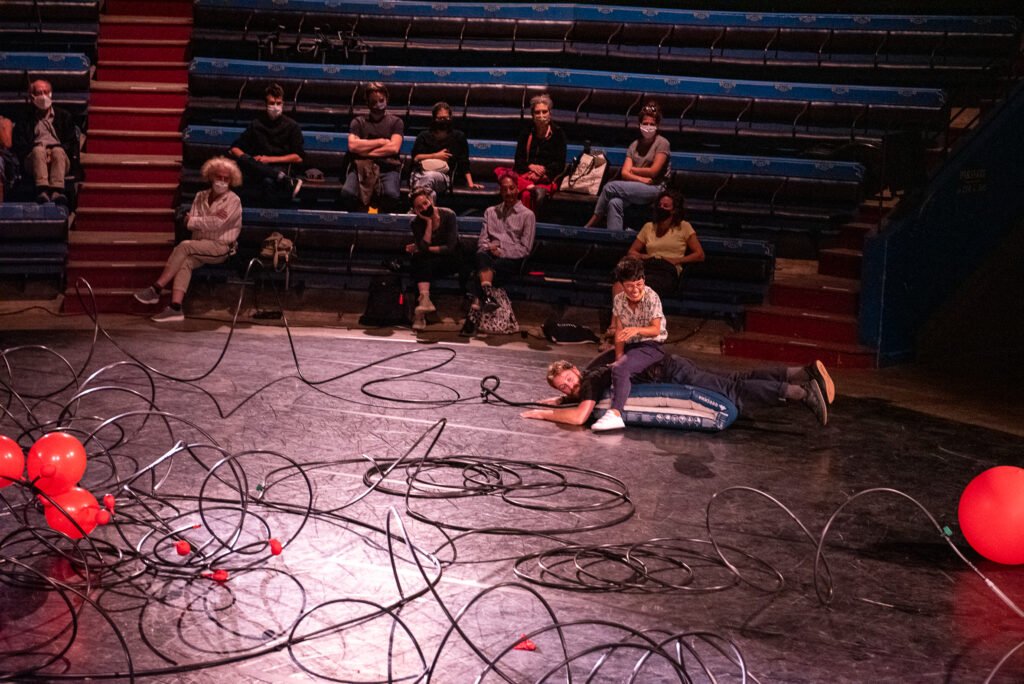
We had the chance to work 2 days with Chloée Sanchez. Chloée is a (contemporary) puppeteer. We showed our research, at least the more interesting parts, and started exchanging based on that. We had many interesting talks and Chloée came up with many references of performances in which objects (as part of the scenography) take a part in the play. Chloée mentioned that our research was leaning towards ‘object theater’.
So we started wondering if we’d be able to get an object to perform circus, or maybe eventually even become a circus performer. In my personal opinion it is the interaction with the audience, and the mixture between virtuosity and banality that makes something ‘circus’. How could we make an object do that?
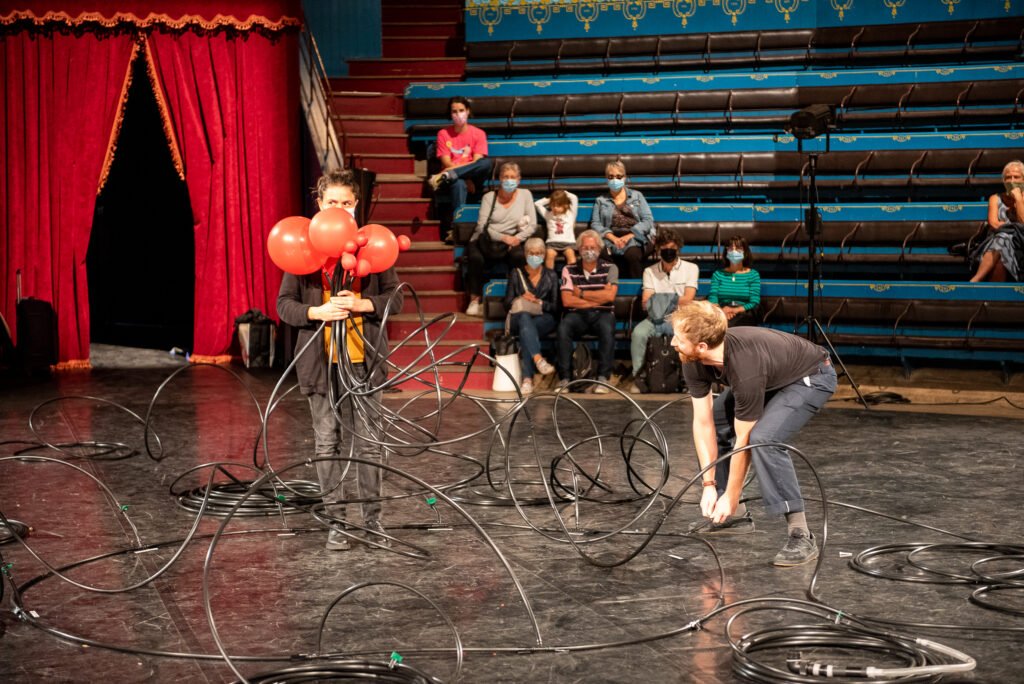
Epiphanies
Throughout the 2 weeks of research we had a few ‘aha-moments’:
-The air is the protagonist
-W: ‘A designer defines and a circus artist redefines.’ → H: ‘A designer uses and a circus artist misuses.’
-The pressure in the system creates links between the audience throughout the different scenes.
Way of presenting
At the start of the residency, we knew that we were about to present the output of our laboratory. This fact has influenced our process. Especially the second week, when our exchange shifted to the idea of ‘presenting’ instead of researching. I don’t judge it as being a bad thing because it gave us a direction and a specific goal. It opened up subjects such as aesthetics, audience participation, interpretation, dramaturgie, dynamics, performer related to object – space – audience, …
My favorite part in a creation process is doing research. Especially when that research doesn’t necessarily need to have a bigger goal than the experiment itself. Open research is very enriching because it departs from the inner impulses and necessities. To my feeling that seems to be a utopia because research is always contextualised. Humans have the tendency to direct their effort towards a tangible outcome that fits in a certain frame.
We concluded that neither Harvey or myself follow the average format of our different artistic categories. We had many interesting dialogues that went beyond our own creative boundaries. We were happy to share the result of our encounter with the audience of Le Manège and to feel the potential of the material we’ve been researching with.
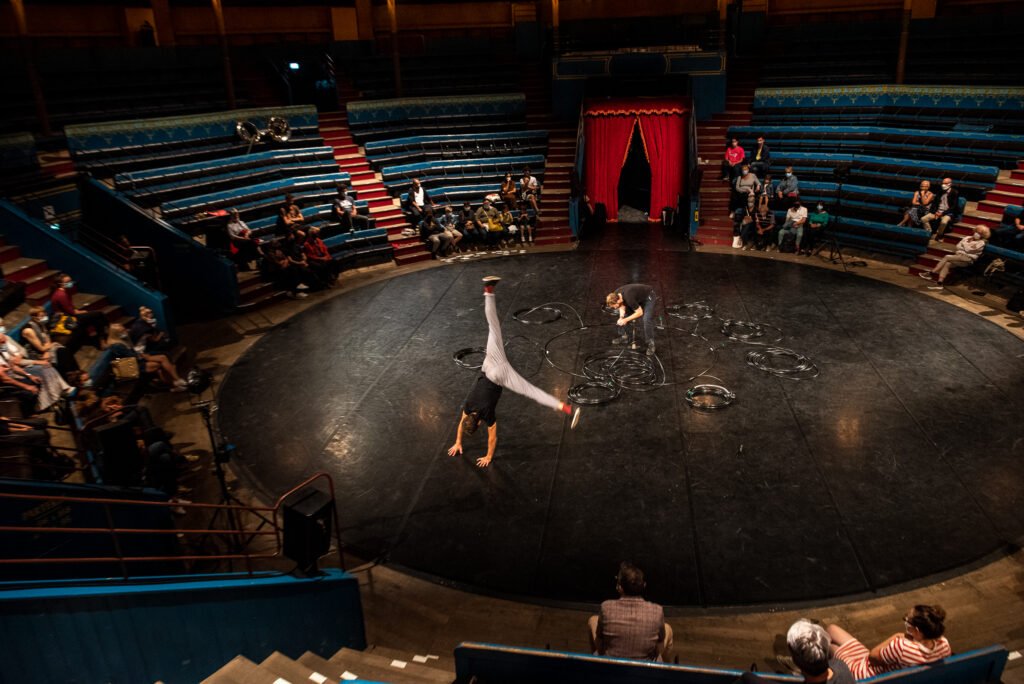
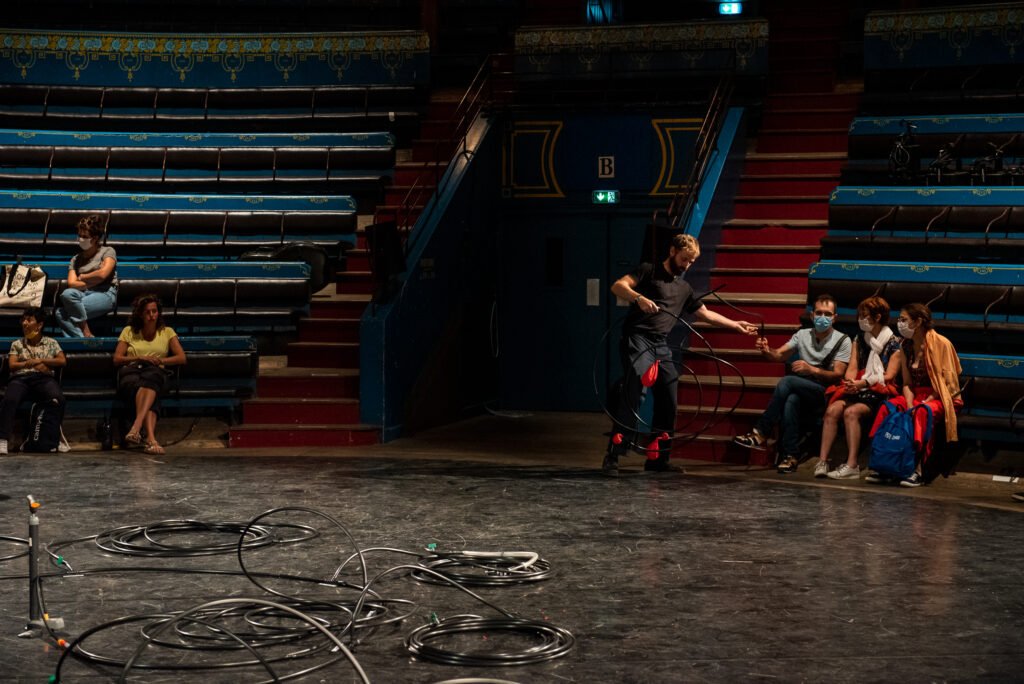

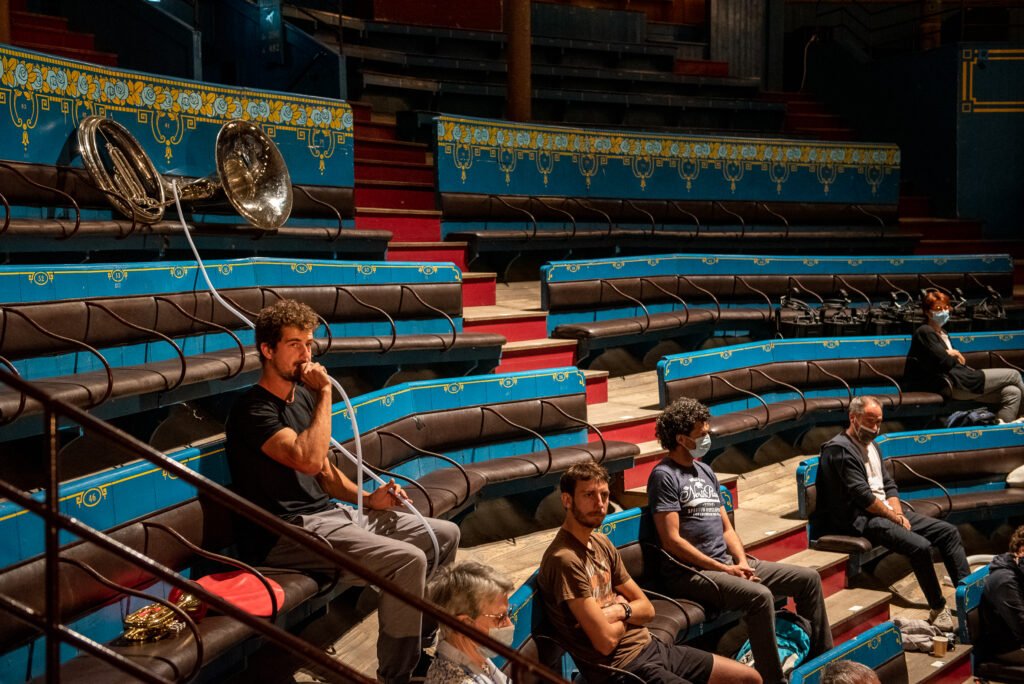
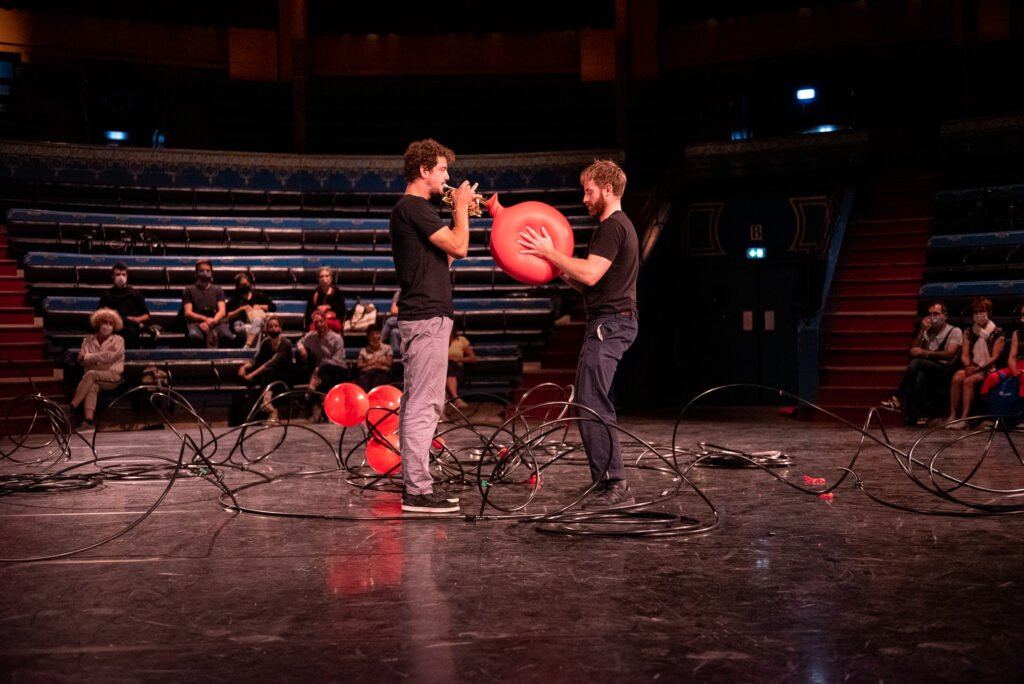

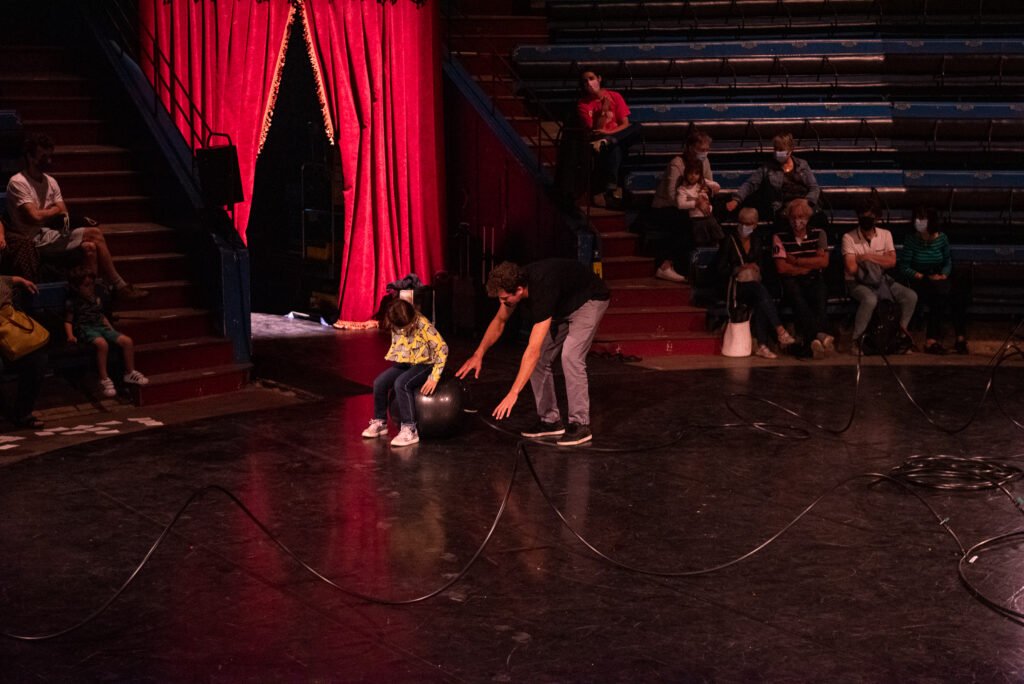

Copyright: Sergio Diaz-Rengifo